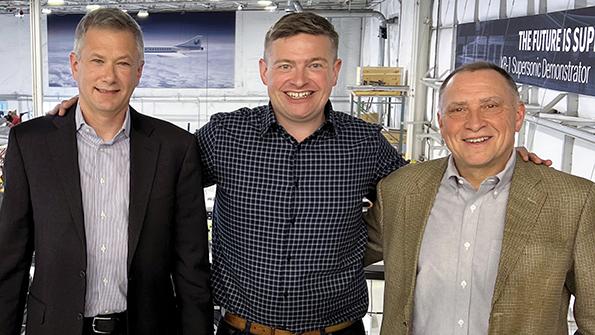Letters From Our Readers, April 18, 2022

What Ever Happened to . . . ?
About seven years ago, AW&ST published a story about a new department at Lockheed Martin that was associated with the famous Skunk Works (“Fusion Frontier,” Oct. 20, 2014, p. 42). The focus of the story was the new line of work Lockheed was undertaking to develop a small, commercially viable fusion power plant. Engineers were proudly quoted about their unique and new approach that would revolutionize the nuclear industry. They were supremely confident their new engineering approach would result in a workable model no later than 2022. How’s that going?
Frederick Arehart, Sun City West, Arizona
Editor’s note: It’s a great question. Lockheed has gone completely dark on that project since 2019. At that time, they needed a funding source to develop and run the T6 version of the reactor, but that was going to cost a few hundred million dollars. If they got the money, it has remained secret or was classified. There’s also the chance that they didn’t get the money but are continuing to run experiments at a lower level before there is a need to start mixing in deuterium and tritium.
Natural Gas
I found interesting and informative the articles about hydrogen (“Hydrogen Equation”) and improved electric aircraft batteries (“Batteries Have Potential if Aviation Is Prepared To Invest in Technology”). (Feb. 21-
March 6, pp. 50 and 53).
However, if we must utilize any low-molecular-weight gas as fuel, why not consider methane? I read in another publication recently about how the Newtown Creek Waste-water Treatment Plant in New York is processing sewage into biogas using anaerobic digesters (methane being the flammable constituent). Methane thus produced could be utilized for any purpose for which natural gas would normally be used.
Cow manure from dairy farms is likewise being processed into biomethane. As with methane from sewage treatment facilities, it could be used in various ways, such as electric power generation using highly efficient combined-cycle gas turbine power plants.
As vehicular or aircraft fuel, methane has advantages over hydrogen. If utilized in compressed form, methane doesn’t have to be stored at as high a pressure for a given range. If utilized as a cryogenic liquid, methane does not require as low a temperature (-259F) as hydrogen (-423F).
If obtained from sources such as those mentioned above, it seems to make more sense to utilize methane directly rather than reform it to yield hydrogen.
Alex Kovnat, West Bloomfield Township, Michigan
Safety and Camaraderie
It comes as a surprise to me to hear an airline pilot be so willing to embrace single pilot operations (“Flying Solo,” Jan. 24-Feb. 6, p. 50). I say this for a couple of reasons. The first is simply safety. You will never convince me that one head is better than or equal to two in real-world operations. This is the lowest of the low-hanging fruit in safe operations. It is self-evident and needs no further explanation.
The second reason falls in a different category. I’ve spent much of my life in two- and three-pilot flight decks and have had the pleasure of flying with some truly great people. A special bond is formed when navigating the skies in sometimes challenging situations. So many people with so many backgrounds and stories and interests.
At my airline, pilots who are retiring have the option of having a large posterboard image of the airplane on which they fly left in the crew room for people to write short farewell notes on. It’s fun to read what people write—lots of warm wishes, acknowledgments of a job well done from peers, and lots of humor. These connections last a lifetime, and I can’t imagine the job without them.
Matt Marohn, Maple Lake, Minnesota
Correction
“FAA Faces Challenging Transition After Dickson’s Departure” (March 7-20, p. 32) should have stated that former FAA Administrator Steve Dickson is a former U.S. Air Force aviator.
Behind The Scenes

Boom Supersonic founder and CEO Blake Scholl (center) gave Senior Editor Guy Norris (right) and Editor-in-Chief Joe Anselmo a walkaround of the XB-1, a one-third-scale flight demonstrator for the Mach 1.7 Overture-1 supersonic airliner, at the company’s headquarters near Denver. Unfortunately, they were not allowed to take photos of the XB-1, which will be shipped to Mojave, California, in the coming months for flight tests (page 44). Norris and Anselmo then headed to the 37th annual Space Symposium in Colorado Springs, meeting up with editors Jen DiMascio, Irene Klotz and Brian Everstine.

